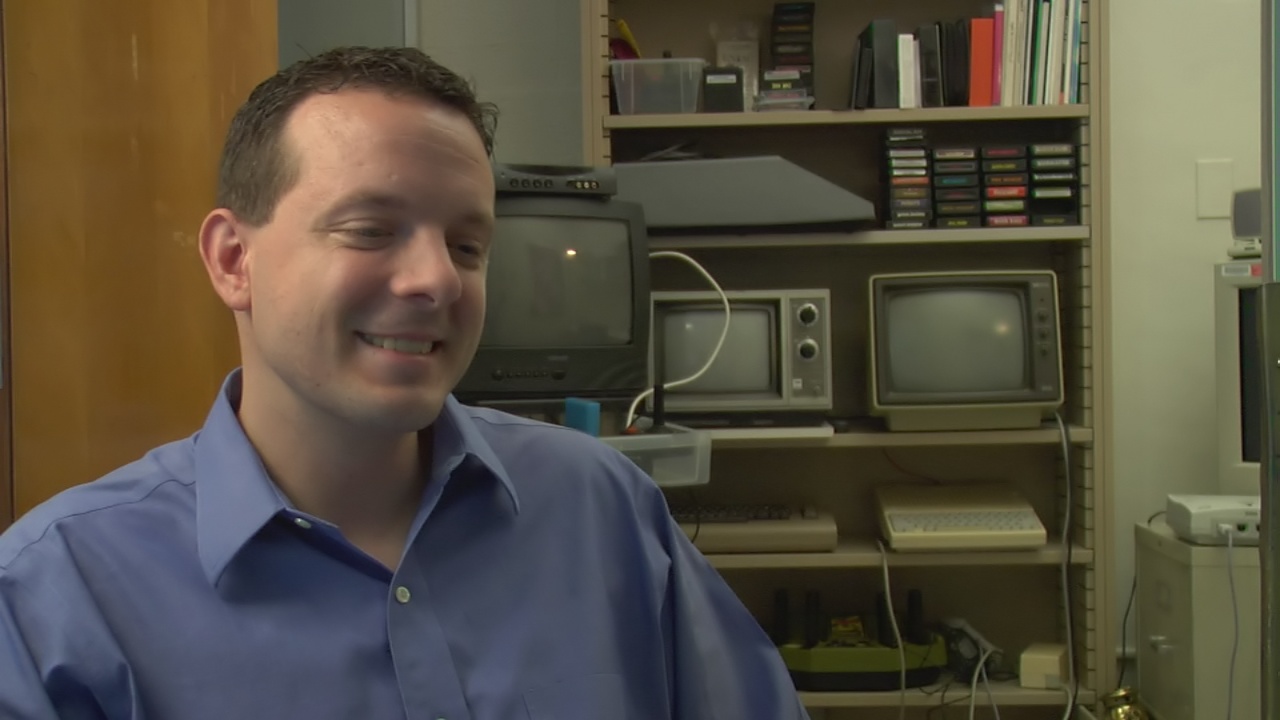Nick Montfort will be joining us on January 10th-12th and will be giving two talks and a presentation of his literary work.
Bio:
 Nick Montfort writes computational and constrained poetry, develops computer games, and is a critic, theorist, and scholar of computational art and media. He is associate professor of digital media in the Program in Writing and Humanistic Studies at the Massachusetts Institute of Technology, and is now serving as president of the Electronic Literature Organization. He earned a Ph.D. in computer and information science from the University of Pennsylvania.
Nick Montfort writes computational and constrained poetry, develops computer games, and is a critic, theorist, and scholar of computational art and media. He is associate professor of digital media in the Program in Writing and Humanistic Studies at the Massachusetts Institute of Technology, and is now serving as president of the Electronic Literature Organization. He earned a Ph.D. in computer and information science from the University of Pennsylvania.
He collaborated on the blog Grand Text Auto, the sticker novel Implementation, and 2002: A Palindrome Story. He writes poems, text generators, and interactive fiction. Montfort has co-edited The Electronic Literature Collection Volume 1 (ELO, 2006) and The New Media Reader (MIT Press, 2003) and written Twisty Little Passages: An Approach to Interactive Fiction (MIT Press, 2003), Racing the
Beam: The Atari Video Computer System, (with Ian Bogost, MIT Press, 2009) and Riddle & Bind (Spineless Books, 2010).
Talk 1:
Line of Inquiry: Many Authors Explore Creative Computing Through a Short Program
3pm Monday, January 10th in Room E2-506
The following one-line Commodore 64 BASIC program:
10 PRINT CHR$(205.5+RND(1)); : GOTO 10
continually generates a pleasing random maze pattern. In this talk, I argue that this tiny program can serve as a Rosetta Stone to help us understand the interconnected cultural and technical aspects of creative computing, practices of using the computer expressively and recreationally in innovative ways. These began in the late 1950s and include the making of computer games as well as other types of amusing and aesthetic programs. By analyzing this short program from multiple viewpoints, I, along with a group of authors who are collaborating with me on this project, aim to show that there are several specific methods that are useful in reading code deeply and insightfully. In my talk, I will discuss how different printed variants of this program exist, how it is written in a particular programming language with a history, and how it executes on a particular platform with a history. I will describe how writing ports to other platforms and creating other variants of this program has helped us understand which of its qualities are most significant and why. Finally, I will describe how the program engages randomness, iteration, visualization, and other wider topics, such as our changing perception of mazes, helping us to understand computing as it relates to culture.
Talk 2:
Curveship: Interactive Narrating for Interactive Fiction
4pm Tuesday, January 11th
Social Sciences 2 Room 075
Curveship is an interactive fiction (IF) development system that adds support for interactive narrating — automatic narrative variation that is accomplished through text generation. For 30 years, IF development systems have done very well at allowing us to build and manipulate world models, which are then encountered by players using text-based interfaces. Curveship aims to do for the *narrative discourse* what IF has already done for the underlying story world, to allow us to change important things about the narrating as easily as we can move a simulated object from one room to another. The system aims to facilitate research and teaching in AI (and expressive AI particularly), computational creativity, creative NLP, and narrative theory, while also allowing allow author/programmers to create new sorts of games with new literary aspects. In my talk, I will demo the system and, in theoretical and practical terms, discuss:
- Curveship’s representation of actions.
- Writing string-with-slots templates for description and representation.
- Generating text using only high-level narrative parameters.
- Developing different types of “spin” — specifications for narrating.
Curveship has been tested and used in research by a small group; it is
being prepared for a public release early in 2011.
Literary Presentation:
Riddle & Bind & Generators
5pm Wednesday, January 12th
Room 139 Digital Arts Research Center
I’ll read from my recent book, Riddle & Bind (Spineless Books, 2010), which contains poems that relate to my work in digital media. These include riddles (figuratively describing something that is left for the reader to guess) as well as constrained writing à la Oulipo. Then, I’ll read some of the output of a few of my concise, free text generators, including my just-published collaboration with Stephanie Strickland, Sea and Spar Between. The words in Sea and Spar Between come from Emily Dickinson’s poems and Herman Melville’s Moby Dick. I’ll conclude by taking questions and discussing the poems and systems that I presented.

